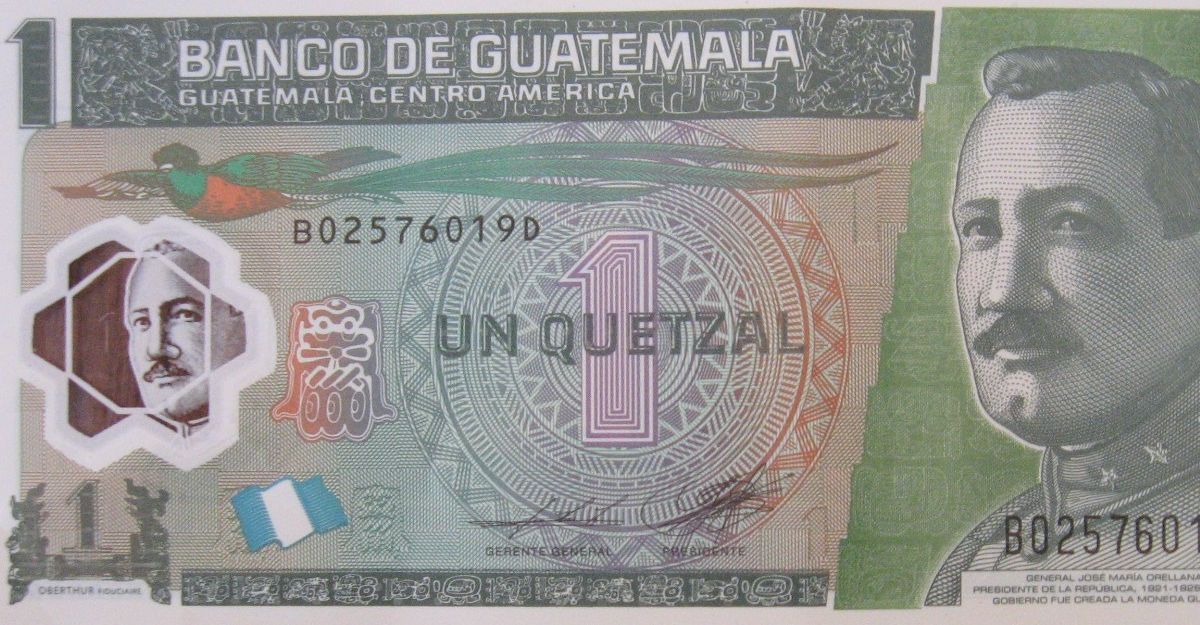Currency in Guatemala
3 min readExploring the evolution of currency in Guatemala as the quetzal gets ready to mark its upcoming centennial.
The post Currency in Guatemala: A New Bill Marks the Quetzal’s 100-Year History appeared first on Central America.

In this article, Nestor Quixtan explores the evolution of currency in Guatemala as the quetzal marks its centennial.
2026 marks the hundredth anniversary of Guatemala’s currency, the quetzal. The Guatemalan central bank has issued a new commemorative one-quetzal bill to honor the quetzal’s centennial. The new bill will be available to the public starting September 10. The Banco de Guatemala has stated the new bill will circulate as legal tender among other current bills, highlighting the evolving nature of currency in Guatemala.
The one-quetzal bill’s renaissance is temporary. More than a decade ago, the Banco de Guatemala phased out the paper one-quetzal bill in favor of coins. The bank withdrew the one-quetzal bill because its production cost exceeded its face value (one quetzal exchanges to about $0.13 at today’s rate). Circulating cheaper metal coins was more cost-effective. This reason underscores the commemorative bill’s limited return to circulation.
As with the commemorative 20-quetzal bill launched in 2021, the public will keep the one-quetzal bill as a souvenir. Bills are available at the Banco de Guatemala offices in Guatemala City. The Numismatic Museum there is open to the public, with souvenirs and collectibles on sale. This museum is worth visiting, especially for those interested in Central American history, particularly monetary matters and the evolution of currency in Guatemala.
🎊💵 A partir de este 10 de septiembre entra en circulación el billete conmemorativo de Q1.00 en celebración de los 100 años de nuestra unidad monetaria.
Consíguelo en los bancos del sistema.#Banguat #100AñosDelQuetzal #UnSigloAcompañandoAUnaNación pic.twitter.com/DxjP89koIJ— Banco de Guatemala (@Banguat) September 9, 2024
A Brief History of the Quetzal
Before the quetzal’s adoption in 1926, the old Spanish colonial system of pesos and reales dominated Central America. While each Central American nation adopted its current currency system at different times, the Spanish system still permeated the local economy in the early 20th century. Four reales made up one peso, with the peso used mainly for larger commercial transactions. Reales were the common currency among the public.
Older reales were silver, with some newer ones produced mainly in zinc and copper. Most pesos were exclusively silver, with some produced in gold. Gold reales are extremely rare and have significant numismatic value. You can find silver reales around Antigua for around $20 to $30, depending on their condition.
The cumbersome conversion system between reales, pesos, and the U.S. dollar made international transactions difficult. The Guatemalan government needed monetary reform to standardize the quetzal to the dollar, leading to a significant change in currency in Guatemala.
The quetzal was created using a system similar to the dollar: one hundred cents make up one quetzal. The name “quetzal” was chosen to honor Guatemala’s national bird. Original designs featured historic buildings, not the presidents shown on current bills. The quetzal was originally pegged at a one-to-one rate with the dollar, with subsequent devaluations landing it at its current exchange rate of roughly 7.80 quetzales for one dollar.
The Banco de Guatemala has announced it is exploring the possibility of a digital quetzal amid growing calls for central bank digital currencies (CBDCs). However, a Guatemalan CBDC seems unlikely in the near future, though it could represent the next evolution in currency in Guatemala.
Nestor Quixtan is a Canadian/Guatemalan economist, linguist, and writer. He lives in Guatemala City.



